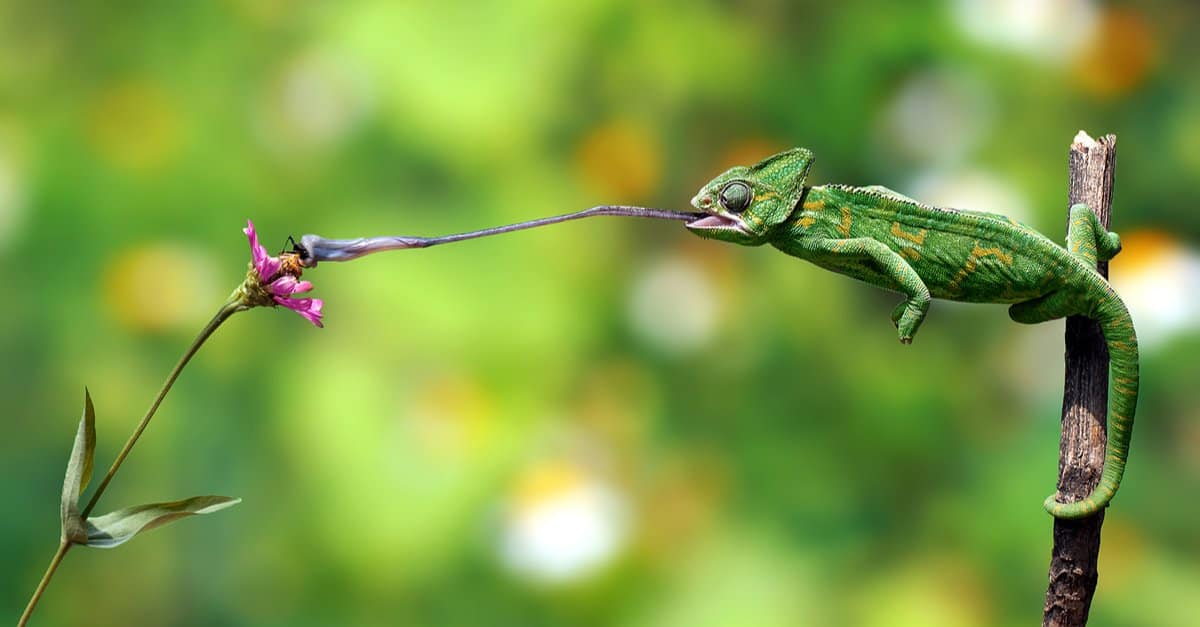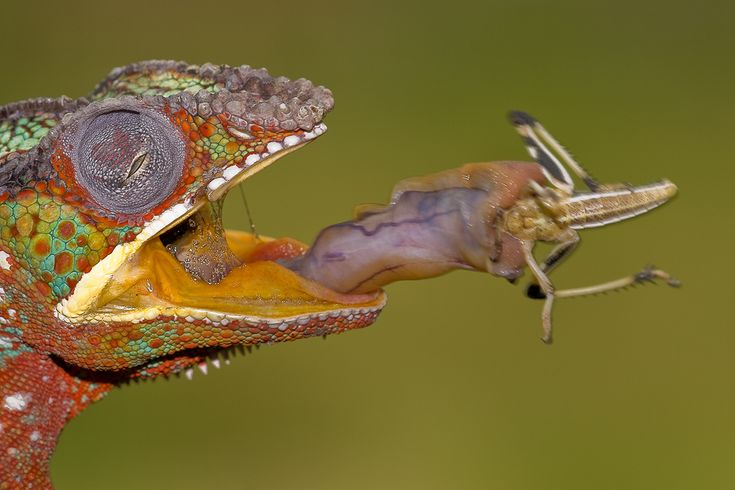Unlocking the Secrets to the Best Chameleon diet
Posted on 19-10-2023 04:12 PM

Chameleons are undoubtedly one of the most captivating reptiles you can choose as a pet. With their striking color-changing abilities and unique personalities, they make for intriguing companions.
However, to ensure your chameleon's health and happiness, providing them with the best chameleon diet is essential.
In this comprehensive guide, we'll delve deeper into the world of chameleon nutrition, providing you with all the insights and information you need to become a chameleon diet expert.
Understanding Chameleon Diet Requirements
The Natural Habitat of Chameleons
Chameleons are found in a variety of environments, ranging from lush rainforests to arid deserts. Their natural habitat plays a significant role in dictating their dietary requirements.


For instance, chameleons from humid rainforests will have different dietary needs compared to those hailing from drier, arid regions.
In the wild, chameleons predominantly feed on a wide range of insects, from crickets to grasshoppers, and even spiders. Their diet is supplemented with occasional consumption of leaves, fruits, and flowers.
Unique Dietary Needs of Chameleons
Chameleons have a unique set of dietary needs. They are primarily insectivores, which means that their main source of nutrition is insects. However, they are also known to consume small amounts of vegetation, particularly leaves and fruits.
Therefore, as a chameleon owner, it's crucial to replicate their natural diet as closely as possible.
Key Factors in a Balanced Chameleon Diet
Creating a balanced chameleon diet involves paying close attention to a few key factors:
-
Protein: Chameleons require high-quality protein sources. In the wild, they often feed on insects rich in protein. As such, the best chameleon diet should include protein-rich live insects.
-
Vitamins and Minerals: Chameleons need essential vitamins and minerals, with calcium and phosphorus being especially critical. Proper supplementation of these nutrients is necessary for their bone health and overall well-being.
-
Hydration: Chameleons not only drink water but also lick droplets off leaves and other surfaces. To meet their hydration needs, it's important to provide them with a source of water, either through misting their habitat or a dripper system.
Chameleon Nutrition
Nutritional Components Chameleons Require
A well-rounded chameleon diet must include a mix of the following nutritional components:
-
Protein: As mentioned earlier, chameleons need a good source of protein. Live insects such as crickets, mealworms, roaches, and silkworms are among the preferred choices.
-
Calcium: Chameleons require calcium for their bone health. This mineral is especially vital for young, growing chameleons. Dusting insects with a high-quality calcium powder is a common practice.
-
Phosphorus: Balancing calcium with phosphorus is important for proper absorption. Avoid high-phosphorus foods and supplements.
-
Vitamin D3: Vitamin D3 is essential for calcium absorption. Ensure your chameleon's UVB lighting is sufficient, or consider supplementing with vitamin D3.
Chameleon Diet Staples
In the realm of chameleon nutrition, certain insects are considered staples:
-
Crickets: These are widely regarded as one of the best staple insects for chameleons. They are a rich source of protein and can be easily gut-loaded.
-
Mealworms: Mealworms are another popular choice. They are high in protein and relatively easy to digest, making them suitable for chameleons of all ages.
-
Roaches: Roaches are protein-rich and relatively low in fat, making them a great choice for chameleons. They can be part of a varied diet.




Live Insects: Crickets, Mealworms, and Roaches
When it comes to selecting the best chameleon diet, live insects are at the top of the menu. Here's a closer look at some of the preferred choices:
Crickets
Crickets are widely recognized as an excellent source of protein for chameleons. They're easy to obtain and can be gut-loaded with nutritious foods to enhance their nutritional value. Furthermore, crickets can be easily dusted with calcium and vitamin D3 supplements before being offered to your chameleon.
Mealworms
Mealworms are another nutritious option for chameleons. These larvae are high in protein and can be a great addition to their diet. However, because of their tough exoskeleton, it's advisable to feed them to chameleons in moderation, especially to young or small individuals.
Roaches
Roaches, such as Dubia roaches, are becoming increasingly popular as a staple insect for chameleons. They are rich in protein, low in fat, and can be easily maintained as a feeder insect. As with crickets, they can be gut-loaded and dusted with supplements to enhance their nutritional value.
Vegetables and Fruits: Appropriate Options
While live insects are the primary protein source, chameleons do consume some vegetation in the wild. As a chameleon owner, you can include a variety of vegetables and fruits in their diet to provide essential vitamins and hydration.
Chameleon Diet Vegetables and Fruits
Some suitable options include:
-
Collard Greens: These leafy greens are packed with nutrients and are a favorite among chameleons. They provide essential vitamins and minerals.
-
Kale: Another leafy green, kale is rich in nutrients and makes for a nutritious addition to their diet.
-
Papayas: Fruits like papayas are a great source of hydration and can be offered as an occasional treat.
-
Berries: Chameleons might enjoy a few berries, such as blueberries or strawberries, from time to time.
Water Requirements and Hydration Sources
Maintaining proper hydration is essential for the health of your chameleon. They obtain water not only from drinking but also from licking droplets off leaves and other surfaces. To meet their hydration needs:
-
Misting: Regularly misting their habitat can create droplets on leaves and surfaces for them to drink from.
-
Dripper System: A dripper system can provide a constant source of water droplets, ensuring they have access to hydration throughout the day.
-
Water Dish: Some chameleons may also drink from a small, shallow water dish.
Gut-Loading Techniques
The Concept of Gut-Loading
Gut-loading is an essential practice in the world of chameleon nutrition. It involves feeding the insects you offer to your chameleon with nutritious foods before they become the main course. This enhances the nutritional value of the insects and, in turn, benefits your chameleon's diet.
When gut-loading insects, consider providing them with nutrient-rich foods such as dark leafy greens, vegetables, and commercial gut-loading products. This practice ensures that the insects themselves are packed with nutrients that your chameleon can then consume.
Chameleon Diet Supplements
In addition to gut-loading, it's vital to use chameleon diet supplements to ensure your pet gets all the necessary nutrients. Here are some key supplements to consider:
-
Calcium: Chameleons require calcium for proper bone development and maintenance. Calcium powder should be dusted onto insects at every feeding, with the frequency varying depending on your chameleon's age and species.
-
Vitamin D3: Vitamin D3 is essential for calcium absorption. It's often included in calcium supplements, but it may be necessary to provide a separate D3 supplement, especially if your chameleon doesn't receive adequate UVB lighting.
-
Multivitamins: Some chameleon owners choose to use a multivitamin supplement, although this should be done sparingly, as overdosing on certain vitamins can be harmful.
Common Chameleon Diet Mistakes
Common Diet-Related Mistakes to Avoid
To provide the best chameleon diet, it's equally important to know what to avoid. Here are some common chameleon diet mistakes:
-
Overfeeding Insects: While insects are a vital part of a chameleon's diet, overfeeding them can lead to obesity and health issues. Ensure proper portion control.
-
Neglecting Hydration: Maintaining hydration is often overlooked. Always provide water sources and mist their habitat to help replicate their natural environment.
-
Inadequate Supplementation: Neglecting supplements or providing them in excess can be harmful. Ensure the right balance of calcium and other vitamins and minerals.
-
Feeding Wild Insects: Wild-caught insects can carry pesticides or diseases. Always choose commercially raised, healthy insects.
-
Ignoring Lighting: Chameleons need access to UVB lighting to synthesize vitamin D3. Without it, they may suffer from metabolic bone disease.
Chameleon Diet Plan
One of the most effective ways to avoid these mistakes is by establishing a clear chameleon diet plan. A structured plan can help you stay on top of feeding schedules and nutritional requirements. Here's a sample weekly diet plan:
| Day of the Week | Diet |
|---|---|
| Monday | Crickets dusted with calcium and vitamin D3 |
| Tuesday | Silkworms with a sprinkle of supplements |
| Wednesday | Collard greens and roaches |
| Thursday | Rest day (no insects, just fresh water) |
| Friday | Crickets with gut-loaded vegetables |
| Saturday | A mix of fruits as a treat |
| Sunday | Roaches with a dusting of calcium powder |
Conclusion
In conclusion, providing the best chameleon diet is the cornerstone of keeping your chameleon healthy, vibrant, and happy. By understanding their natural habitat, unique dietary needs, and the common mistakes to avoid, you are well on your way to being a responsible and informed chameleon owner.
To ensure your pet's well-being, consider consulting with a reptile expert or veterinarian who can provide personalized advice tailored to your chameleon's specific needs.
Remember that a well-balanced chameleon diet is an essential aspect of responsible chameleon care, contributing to their longevity and the enjoyment of having these captivating reptiles as your companions.